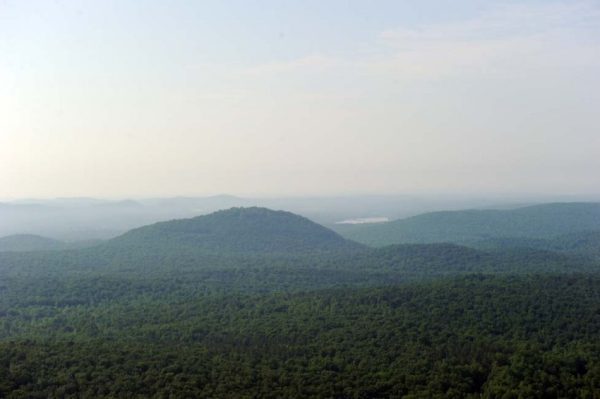N.C. growth brings challenges for land preservation

In 1995, the year the Land trust for Central North Carolina was founded, our state’s population was 7.35 million. Remember those days? Back when we bought CDs by Coolie and Joe Diffie (really?) and drove to video stores to rent copies of Toy Story, Clueless and Braveheart? When we flocked to AOL for this newfangled thing called internet service? When we couldn’t even do a Google search?
Fast forward to 2015. Our population is approaching 10 million, an increase that seems as rapid as the innovations in technology. Since 1995 folks have settled in the mountains and at the coast, but the Piedmont has accommodated the bulk of the newcomers. The trend is expected to continue, even accelerate. A recent United Nations report projects that during the 20-year period ending in 2030, Charlotte and Raleigh will be the fastest-growing cities in the nation. In the face of this development pressure, the Land trust has managed to protect 25,000 acres across a 10-county region that straddles the Yadkin-Pee Dee River.
Despite the state’s explosive growth, population is stagnant or declining in rural corners of our region – like the Uwharries – as people seek jobs and lifestyle amenities in urban centers. While this is certainly a concern in sustaining our tax base as well as a good quality of life for residents, perhaps we can reframe this as an opportunity to create a unique niche for ourselves. If we make good decisions in coming years, the Uwharries will still have forests and farms, clean air and water, long after the rest of the Piedmont has run out of space. The Uwharries will have priceless amenities no urban area will be able to offer.
Thanks to the Uwharrie National Forest, Morrow Mountain State Park, the Pee Dee National Wildlife Refuge and the North Carolina Zoo, the region already has more than 60,000 acres of public land. This is a strong foundation, and it has guided the land trust’s conservation priorities in the Uwharries, allowing us to focus our efforts and articulate a compelling vision.
The land trust has targeted some tracts primarily for their outstanding natural features, from a pristine upland depression adjacent to Morrow Mountain State Park to a large tract of old-growth longleaf pines near the town of Troy. The land trust has helped preserve our cultural history as well. Our portfolio includes tracts with Native American significance; the site of historic Lawrenceville, an early county seat; and working forests and farms owned by stewards who strive to protect water quality and provide wildlife habitat.
We also seek to enhance opportunities for outdoor recreation. The land trust has acquired numerous tracts along the historic Uwharrie Trail corridor in an effort to double the length of this twenty-mile footpath. Protecting seven miles of frontage on the Uwharrie River has provided better access for anglers and paddlers, as well as for kids who simply want a place to wade and skip rocks. I know a boy who asked to be baptized in the river at one of the properties protected by the Land trust.
We’ve made some of these tracts available to archeologists for academic study; to Special Operations forces for military training; and to Boy Scout troops for orienteering, hiking and camping. In the Uwharries, we’re doing more than conserving land. We’re helping protect a rural way of life while also helping retool the local economy as the region struggles to overcome the loss of textile jobs by focusing on its potential for eco-tourism.
As we observe the Land trust’s 20th anniversary, we celebrate the great strides we have made in the Uwharries, but we realize we cannot afford to rest on our laurels. Take out a map and draw a line between Charlotte and Raleigh; it crosses the heart of the Uwharries. Now is the time to ramp up our conservation efforts, but that will be difficult unless our legislators return public funding to pre-recession levels. Our actions over the next two decades will likely determine whether we’re able to preserve an intact landscape and rural way of life at the very center of the Urban Crescent.
Ruth Ann Grissom is a board member of Land trust of Central North Carolina. The opinions in this article reflect those of the author, and are not necessarily those of the UNC Charlotte Urban Institute or the University of North Carolina at Charlotte.